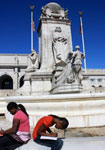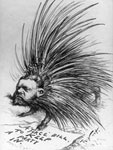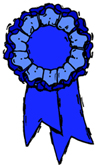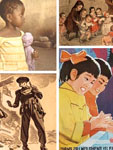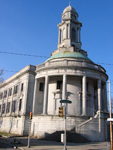Lower Level Learners: Teaching Their Way

How do you impart knowledge to low learner students? How do you help them understand the lesson?
That’s a big question! And an important one. While there are many methods for reaching lower level students, two key strategies can help you think this through: scaffolding and formative assessments.
As teachers, we often focus so much on where we want students to be that we forget we must begin by meeting them where they are. When a building is constructed, scaffolds are placed around the building to give it additional support. As the building becomes more stable on its own, the scaffolds are removed, a few at a time. Eventually, the building stands independently of the scaffolds. Similarly, "scaffolding" your lessons provides additional support to students as they work toward understanding the content on their own.
You can scaffold your lessons in a wide variety of ways, depending on your students' specific needs. Some useful scaffolds include graphic organizers, guided notes (notes that are already partially completed for the student), pre-teaching important vocabulary, and adapting reading materials to students' reading levels. Below we discuss two of these methods: modifying documents, and using KWL charts.
Modifying Documents
Understanding the sometimes archaic or complex language of historical texts can be challenging even for experienced students of history. For struggling readers, such a task can be nearly impossible. When the choice is modifying documents or not using them at all, we support doing the former. By modernizing spelling and punctuation, removing confusing or unnecessary phrases, even replacing difficult vocabulary, you open the door for your struggling students to have more successful experiences in historical analysis. For guidance on adapting and modifying challenging historical texts, see this teaching guide on adapting historical documents for the classroom.
K-W-L Charts
Another valuable method for scaffolding, or supporting student understanding while simultaneously preparing them to become independent learners, is the "KWL chart," a simple graphic organizer in which students first list what they already know about a particular historic source (K), and what they want to know (W). This strategy not only helps you as the teacher to see where your students are at the beginning of the lesson, but also helps students read a source closely, connect your lesson with their prior knowledge, and provides a structure for students to organize their new understandings.
The KWL activity also demonstrates our second key strategy for meeting the needs of struggling students—formative assessment. As teachers, we must continually assess student understanding and use what we find out to plan our instruction. What do students already know about a topic? What have they learned from a particular lesson? What don’t they understand? Sometimes we get so caught up with planning our lessons, we forget to focus on what students actually learned from that lesson. Using K-W-L charts allows you to see what students understand at the outset of a lesson, and at its close.
The beginning portion of this video clip illustrates how one teacher works assessment into her lessons. She starts with a question, "What does it mean to be an American?" that allows her to see students' beginning ideas. Then, when students are working with historical sources about the immigrant experience, she circulates through the classroom and listens to individual students make sense of the documents.
Formative assessments can be as simple as a brief one-on-one conversation like those shown in the video, or a short "ticket-out"—a small slip of paper on which students must write one thing they learned before leaving class for the day. They can be more complicated, such as requiring plans and drafts for written work where you can see whether students understand key aspects of historical writing, such as using evidence to support a thesis, or including important background information. As you continuously check for student understanding in a variety of ways, you will see how students are making sense (or in some cases, not making sense) of the material. You will more easily detect misconceptions and most importantly, you can use this information to plan your next instructional steps.
The fact that you are even asking this question shows that you are moving in the right direction—you are aware of how your students are doing, and you see that some of them need additional help. We wish you the best as you work to scaffold their learning, and continually assess their understanding to design lessons that will meet their individual needs.
Also see these related questions: How do I use difficult primary sources with my 8th graders? and How do I use DBQs with struggling readers?
